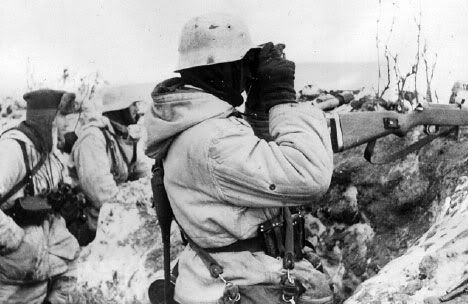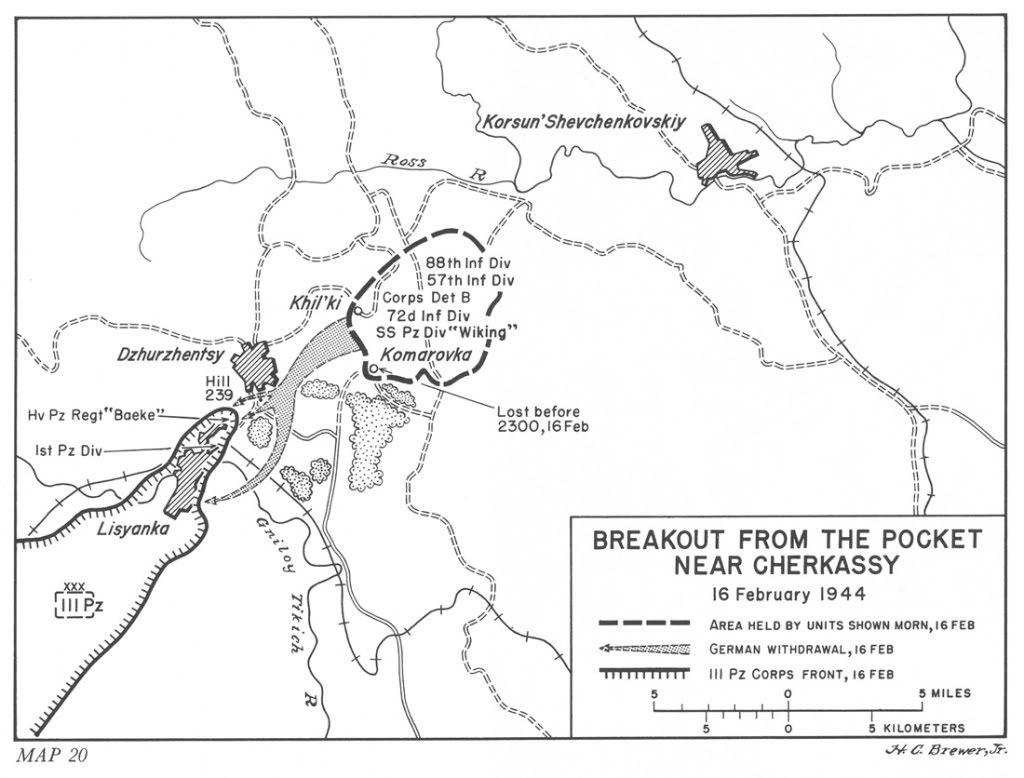(English text below)
Al fin, nuestra primera campaña de Flames of War dará comienzo en Octubre: la breve, pero intensa batalla de la bolsa de Korsun, disponible en la propia página de BF, con 2 jugadores por bando. No vamos a seguir fielmente la historia, ¡principalmente porque uno de nuestros jugadores aliados juega británicos! Así pues, realizaremos una serie de cambios 'estéticos', entre ellos:
- sustituiremos la 5. SS Panzerdivision 'Wiking' por la Panzergrenadier-Division 'Feldherrnhalle'
- añadiremos una pequeña fuerza de la 2. Fallschirmjäger-Division
- crearemos una Fuerza Expedicionaria Británica en Ucrania asignada al 2º Frente Ucraniano de Iván Konev.
Ahora los acontecimientos históricos:
La inacabada línea defensiva Panther-Wotan, que seguía el curso del río Dniéper, debía cubrir la retirada del ejército alemán tras la Batalla de Kursk, permitiéndole acortar la línea del frente, pero para el 1 de Diciembre de 1943 estaba hecha pedazos y el Ejército Rojo había cruzado el Dniéper en fuerza. Sólo el saliente entre Kanev y Cherkassy se hallaba firmemente en manos alemanas. Hitler rechazó las repetidas peticiones de retirada de Von Manstein, al considerar que el aeródromo de Korsun podría abastecer a los defensores el tiempo suficiente para embolsar a su vez a los soviéticos, destruirlos y lanzar una contraofensiva para retomar Kiev. Las fuerzas soviéticas no estaban ociosas, y el 24 de Enero el 1er Frente Ucraniano de Vatutin y el 2º Frente de Konev atacaron desde el noroeste y el sudeste, respectivamente, enlazando cuatro días después en las proximidades de Zvenigorodka, copando el saliente y atrapando a 57.000 soldados alemanes.
Naturalmente, los planes de Hitler no eran más que una fantasía; las maltrechas Divisiones Panzer alemanas, debilitadas y faltas de suministros, fueron incapaces de llevar a cabo esa titánica tarea. El I Panzer Armee del general Hube intentó romper el cerco, pero pronto se atascó por la férrea resistencia soviética y la temida rasputitsa. Se lograron pequeños avances entre los días 8 y 12 de Febrero, pero las fuerzas alemanas fueron incapaces de progresar más allá. Los cercados tendrían que abrirse paso por sus propios medios.
Con el tiempo y los suministros agotándose, la situación en la bolsa se volvía cada vez más desesperada. Sin embargo, el general Stemmermann consiguió no sólo mantener a raya a los soviéticos, sino que logró apoderarse de varias localidades clave en el sur, acercándose a las líneas alemanas. El 16 de Febrero, Von Manstein ordenó la salida. El equipo pesado fue dejado atrás, y los sitiados organizaron una silenciosa infiltración nocturna en tres puntas, pero fueron descubiertos, y la retirada se convirtió en una desbandada. Aun así, 35.000 hombres pudieron alcanzar las líneas del III Panzerkorps.
* * *
At last, we will run our first FoW campaign in October, the short but furious Korsun pocket campaign, available on Battlefront's website, 2 players per side. Not going to stick with History, to be honest, since one of our Allied players plays Brits! So a few 'aesthetical' changes will be made:
- 5. SS Panzer Division 'Wiking' will be replaced by Panzergrenadier-Division 'Feldherrnhalle'
- a small force from 2. Fallschirmjäger-Division will be added
- a British Expeditionary Force in Ukraine will be created and assigned to Ivan Konev's 2nd Ukrainian Front.
Now the historical events:
The unfinished Panther-Wotan Line, that ran along the Dnepr river, was built to shield the retreat of the German army after the Battle of Kursk, allowing them to shorten their front line, but by December 1st, 1943 it had been shattered and the Red Army had crossed the Dnepr in force. Only the salient between Kanev and Cherkassy was firmly held in German hands. Hitler refused Von Manstein's repeated requests for withdrawal, considering that Korsun's airfield would be sufficient to supply the defenders long enough to conduct the encircling of the two Soviet Fronts, destroying them and then launching a counteroffensive to retake Kiev. Soviet forces were not idle, though, and on January 24th Vatutin's 1st Ukrainian Front and Konev's 2nd Ukrainian Front attacked from the northwest and southeast respectively, linking up four days later in the vicinity of Zvenigorodka, cutting off the salient and trapping 57,000 German soldiers inside.
Unsurprisingly, Hitler's plans were but a dream. The battered Panzer Divisions, undestrength and running short of supplies, were unable to carry out this enormous task. General Hube's I Panzer Armee launched desperate relief attacks, but soon became bogged down by stiff Soviet resistance and the dreaded rasputitsa. Small gains were achieved between February 8th and 12th, but were unable to advance any further. The trapped Germans would have to breakout by their own means.
Running out of time and supplies, the situation inside the pocket became increasingly desperate. However, General Stemmermann managed not only to keep the Soviets at bay, but also seized some key villages in the south, getting closer to the German lines. On February 16th, Von Manstein ordered the breakout. Heavy equipment was left behind, and the trapped soldiers conducted a three-pronged infiltration, but were discovered, and the retreat became a rout. Still, 35,000 men could reach III Panzerkorps' lines.




No hay comentarios:
Publicar un comentario